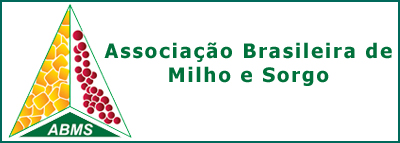DESEMPENHO DE HÍBRIDOS DE MILHO PARA SILAGEM CULTIVADOS EM DIFERENTES LOCAIS COM TRÊS DENSIDADES POPULACIONAIS
DOI:
https://doi.org/10.18512/1980-6477/rbms.v17n1p49-62Keywords:
altitude de cultivo, fibra em detergente neutro, NDTAbstract
RESUMO - O objetivo foi avaliar a produção de biomassa e a composição física e química da planta de três híbridosde milho simples (P2530H, P30R50H e P30B39H) associadas a três densidades de plantio (60, 70 e 80 mil plantas ha-1) e três locais de cultivo (Local A, B e C). De forma isolada, as maiores produções de biomassa seca e de grãos, respectivamente, foram observadas na densidade de 80 mil plantas ha-1 (30.067 e 14.020 kg ha-1) e no local C (30.157 e 13.895 kg ha-1). Com relação aos híbridos estudados, houve influência do local de cultivo em que o híbrido P2530H foi superior para produção de biomassa seca e de grãos nos locais A e C (28.600 e 31.485 kg ha-1) e o híbrido P30B39H no local B (30.356 e 14.760 kg ha-1). Quanto à avaliação bromatológica, o local B gerou os maiores teores de proteína bruta (7,00%), matéria mineral (2,74%), fibra em detergente neutro (65,33%) e fibra em detergente ácido (36,10%), enquanto obteve os menores teores de nutrientes digestíveis totais (62,57%), comparado aos locais A e C (65,85 e 65,47%, respectivamente). De maneira geral, a densidade de cultivo não alterou os valores nutricionais das silagens dos diferentes híbridos de milho e locais de cultivo.
Palavras-chave: altitude de cultivo, produção de biomassa seca, fibra em detergente neutro, NDT.
HYBRID PERFORMANCE FOR MAIZE SILAGE CULTIVATED IN DIFFERENT PLACES WITH THREE POPULATION DENSITIES
ABSTRACT - The aim of this work was to evaluate the performance of three maize hybrids (P2530H, P30R50H e P30B39H) with three population densities (60, 70, and 80 000 plants ha-1) in three grown locations (A, B e C). In isolation, the greater dry biomass and grain yield, respectively, were observed in the density of 80,000 plants ha-1 (30,067 and 14,020 kg ha-1) and place C (30,157 and 13,895 kg ha-1). Regarding the hybrid, there was a direct influence of the local cultivation, and hybrid P2530H had the higher dry biomass and grain production in the location A and C (28,600 and 31,485 kg ha-1), and the hybrid P30B39H on location B (30,356 and 14,760 kg ha-1). In the bromatological assessment, the location B obtained the highest CP (7.00%), MM (2.74%), NDF (65.33%) and ADF content (36.10%), while it had the lower levels of TDN (62.57%) compared to locations A and C (65.85 and 65.47%, respectively). In general, the plant density did not change the silage nutritional values in maize hybrids associated with different places.
Keywords: sowing altitude, dry biomass, neutral detergent fiber, TDN.
Downloads
Published
How to Cite
Issue
Section
License
Authors retain copyright and grant the journal right of first publication with the work simultaneously licensed under the Creative Commons Attribution License that allows the sharing of work and recognition of the work of authorship and initial publication in this journal.
Authors are able to take on additional contracts separately for non-exclusive distribution of the version of the paper published in this journal (eg, in an institutional repository or publish as a book), with acknowledgment of its initial publication in this journal.
Authors are permitted and encouraged to post their work online (eg, in institutional repositories or on their website) at any point before or during the editorial process, as this may leadto productive exchanges, as well as increase the impact and citation of published work.



